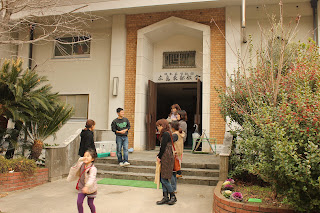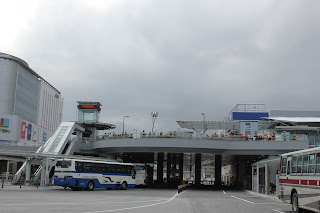I arrived at Incheon airport last Saturday afternoon. The airport looked clean and efficient as usual, but it was quieter and filled with more security police than I'd seen in that airport in the last 10 years. I didn't know that there was to be a Nuclear Security Summit being held this week in Seoul. The summit included leaders from over 50 nations and over 5,000 other delegates, journalists, and so on.
One of the hottest topics talked about among people before the summit began was North Korea's plan to launch a rocket some time between April 12th and 15th in celebration of the 100th birthday of the late leader, Kim Il-Sung (grandfather of Kim Jung-Eun). Despite having one of the largest militaries in the world, North Korea has a starving population and is trying to negotiate food aid from the USA but has technology to make a missile that could potentially reach as far as the Philippines or Australia (just so you know, South Korea does not have the technology to produce such powerful missiles!). North Korea is now planning to launch a rocket into space. You can read more about the planned rocket launch next month on the BBC website, here.
The Japanese Prime Minister, Mr. Noda, quietly left the Nuclear Security Summit before its official closing ceremony after slamming North Korea, even though representatives had agreed not to discuss localized nuclear issues such as Iran and North Korea at the summit (Read Reuters report here). While many Heads of State were busy with bilateral summits and agreements before and after the summit, Mr. Noda came to Seoul quietly, had no other meetings, and left quietly. One could suspect his unusual actions may be due to the present crisis in Fukushima, but the Korean media suspects more than that. Korea and Japan share a history of wars and hatred, and extreme right-wing nationalism has been growing in both nations over some of the unresolved issues of the past. No one truly knows the reason other than Mr. Noda himself.
 |
| Incheon Airport |
The Politics of Fear and the Culture of Numbness
Returning to Seoul after spending 2-3 weeks in Fukushima, I am always overwhelmed by the emotional distance and the depth of brokenness between the two nations compared with their physical closeness. Fukushima seems to have long forgotten by world media, but the fear of radiation often surfaces in Korean media, as in Tokyo or other parts of Japan. At the same time, as I talked with a few friends in Korea over lunch or coffee this past weekend, the Korean people do not seem concerned about North Korea's rocket launch plan in Seoul, I sense more than fear of radiation; there is also fear coming from the past. Koreans fear what Japan might turn to in dealing with its neighbouring nations out of this ongoing national crisis. The mass-irritation and deep anger toward Japan felt by my own people in Korea makes me wonder at the bizarrely high level of silence and numbness with regard to the current situations with our own brothers and sisters beyond the 38th Parallel North.
I cannot really speak into this century-old hatred between the two nations, as one who did not experience the atrocities of the Japanese occupation or of the Korean war. All I can say as a Korean is that we need to work toward building a shared future of "shalom," a true peace that is not simply a passive silence. And it must begin here and now. No more waiting.



















